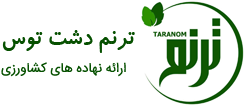- شما هیچ آیتمی در سبد خرید خود ندارید
- قیمت کل: 0 تومان
Biomass as one of the renewable-energy sources is both sustainable and eco-friendly. Considering the approximately 30% of wastes for agricultural products in Iran as well as the importance of processing industry in reducing wastes, biomass such as pistachio is extremely noteworthy. According to the published statistics, the area under cultivation of pistachio in Iran is currently more than 300,000 ha.
Kerman Province with an area of 200,000 ha provides 67% of total Iranian pistachio so that it is the most important area of pistachio cultivation around the world. On average, there are approximately 520,400 tons of pistachio wastes per year in Iran, which is mostly related to peeling of product. Studies indicate that the fermentation and pyrolysis processes of pistachio waste produce valuable fuel. In addition, the biological digestion process can be performed on freshly harvested pistachio wastes. This paper shows that there is a considerable potential for the use of agricultural residues, especially pistachio as fuel in Iran.
It was found that the production of biogas from pistachio’s soft shell, and pyrolysis of pistachio’s hard shell are the most effective ways to dispose of wastes, fuel production, and optimum use of them. It can produce about 256,410, 121,255, and 123,898 tons of bio-oil, char, and gas fuel from pistachio wastes by pyrolysis, respectively. Furthermore, the amount of 103.5 million cubic meters of biogas can be achieved using anaerobic fermentation. The potential of 47.6 million liters ethanol production from total pistachio waste can be predicted. The use of pistachio wastes in addition to economic benefits for investors, will have positive environmental effects.
refrence:https://www.sciencedirect.com



